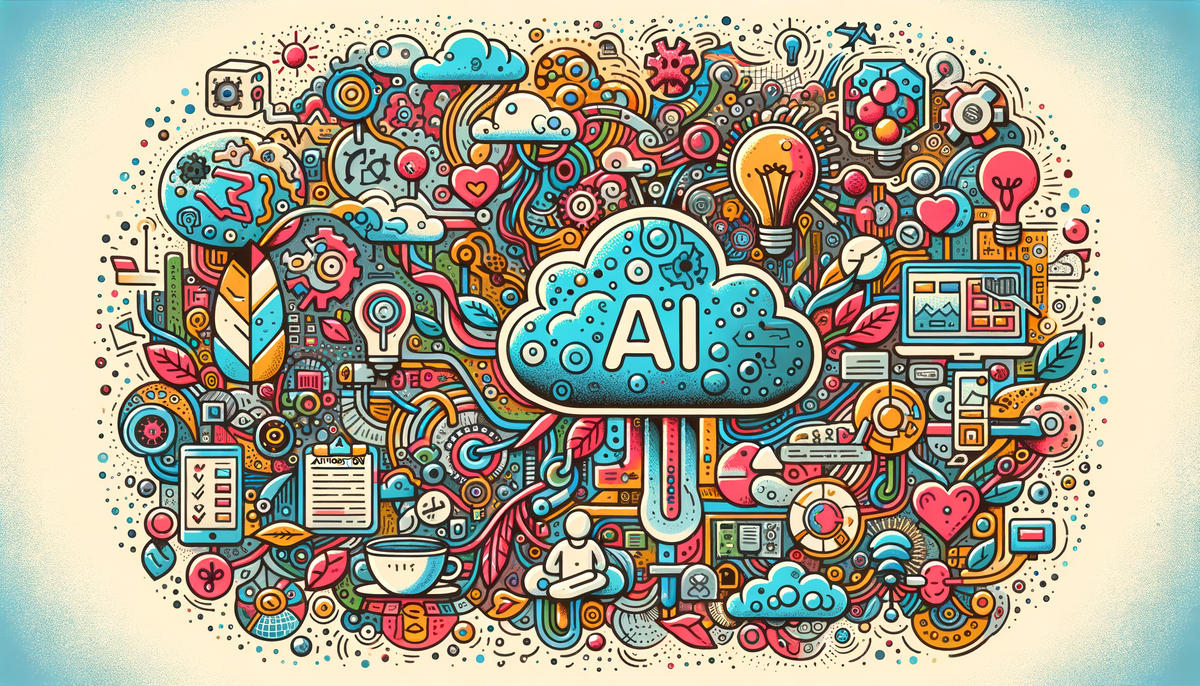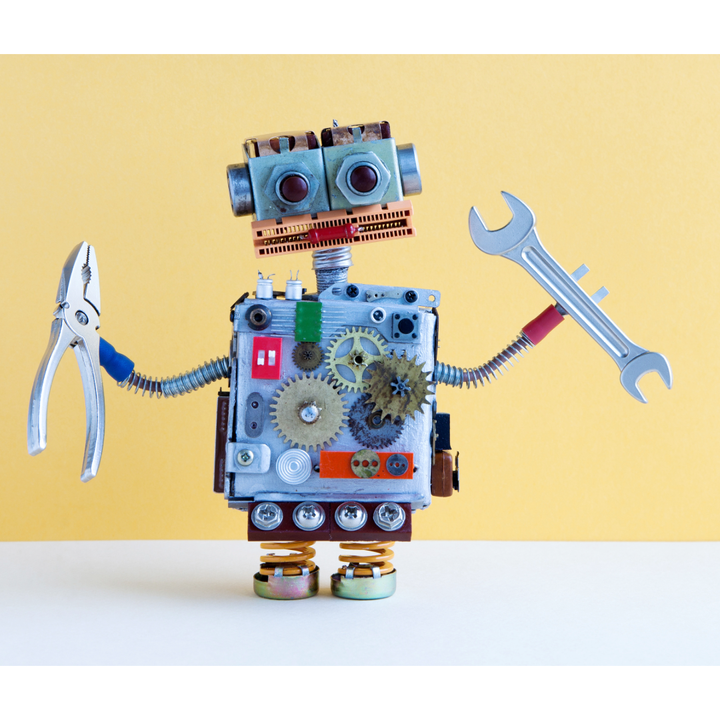Charting the Future of AI in Various Sectors

This article surveys the multifaceted impact of Artificial Intelligence across sectors—from revolutionizing drug discovery and manufacturing, ensuring ethical and robust auditing processes, to defending creative content online, reshaping educational experiences, bolstering healthcare delivery, navigating political censorship, and transforming smart home ecosystems with emotional intelligence. In a rapidly evolving landscape, AI presents both transformative opportunities and critical challenges that require thoughtful engagement and ethical stewardship.
The Many Faces of Artificial Intelligence: Transformations, Challenges, and Opportunities
In recent years, the breakthroughs in artificial intelligence have not only redefined technological innovation but have also intertwined deeply with everyday life. From facilitating drug discovery processes and transforming healthcare operations to reshaping educational environments and protecting creative content, the omnipresence of AI in our digital and physical landscapes motivates us to delve into its nuances. In this expansive exploration, we discuss pivotal developments drawn from varied sectors, highlight expert opinions, and reference internal AI.Biz updates such as Charting Tomorrow: The Interplay of AI in Various Sectors and Rethinking Our Digital Landscape to contextualize the dialogue on AI's pervasive influence.
AI in Drug Discovery and Manufacturing: Accelerating Innovation in Healthcare
The integration of AI into pharmaceuticals is one of the most promising frontiers of technological advancement. As highlighted by the U.S. News & World Report article on "8 AI Drug Discovery and Manufacturing Stocks to Buy", investors have started to look towards companies harnessing AI technologies to optimize drug discovery processes. Even though specific stock recommendations do not align with investment advice, the discussion reveals that AI-driven platforms can analyze vast datasets to expedite the identification of new drug candidates and simulate clinical trials, potentially reducing the time and cost involved in drug development.
An illustrative example is the use of machine learning to sift through enormous chemical libraries, identifying promising molecular structures that could lead to breakthrough therapies. With the ability to predict biological responses with increasing accuracy, these AI systems act as powerful allies to human researchers, accelerating the path from laboratory to market. In a broader context, such developments not only promise enhanced patient outcomes but also a more sustainable approach to healthcare innovation by offloading repetitive, time-consuming tasks to automated systems.
"Artificial intelligence is not a substitute for natural intelligence, but a powerful tool to augment human capabilities." — Fei-Fei Li, The Quest for Artificial Intelligence
This sentiment echoes the broader narrative: AI is here not to replace human intuition but to serve as an indispensable accelerator in fields like pharmaceuticals, where precision and speed are paramount. For readers interested in broader insights on healthcare transformation through technology, our article Beyond Documentation: The Future of AI in Healthcare and Education offers deeper dives into similar innovative paradigms.
Auditing AI: The Imperative of Ethical Oversight and Accountability
The pervasiveness of AI in our daily lives brings not only unprecedented capabilities but also critical challenges that demand vigilant oversight. An illuminating piece from HBR, "What Leaders Need to Know About Auditing AI", sheds light on the necessity of incorporating robust auditing frameworks as AI systems become indispensable to decision-making in high-stakes domains such as lending, housing, healthcare, and legal advisories.
As AI technologies extend their reach from behind-the-scenes applications to frontline operations, ensuring transparency and fairness is more important than ever. The potential for biases in automated decision-making can lead to inequitable outcomes if left unchecked. Hence, leaders are advised to adopt proactive auditing measures that entail both independent oversight and comprehensive regulatory mechanisms. For instance, real-time data monitoring and algorithmic bias detection are fast becoming standard protocols in organizations that are trailblazing AI integration.
This approach not only safeguards the integrity of AI outputs but also builds public trust—a critical component when technology systems influence vital aspects of human life. Consider the transformative discussions in our previous AI.Biz update, Rethinking Our Digital Landscape, where security and societal impacts of AI deployment were critically examined. Such cross-sector insights affirm that a culture of responsible AI innovation is key to harnessing its full potential while mitigating associated risks.
Innovative Hacks Against Content Theft: Cloudflare’s AI Labyrinth
The digital arena is witnessing an extraordinary tug of war over intellectual property and creative content. In response to growing concerns that AI bots might hijack web content for training purposes, Cloudflare has devised an inventive "AI labyrinth", as reported by Euronews. This innovative strategy involves setting up an intricate maze of decoy information designed to mislead AI crawlers while simultaneously documenting the bots’ activities. The concept is both clever and necessary, considering that unauthorized data extraction can undermine the rights of creative professionals.
Cloudflare's tactic is not just about thwarting data scraping but also represents a broader trend where content creators are exploring methods to "poison" datasets—an effort to maintain the integrity of their art. As the reliance on generative AI systems intensifies, these digital defenses will likely become more sophisticated. The broader implications of such strategies are profound, urging tech giants and policymakers alike to address the balance between innovation and intellectual property rights.
By understanding tactics like Cloudflare's labyrinth, we appreciate that the fight for creative ownership in an AI-driven world is ongoing. This intersection of technology and creative rights is emblematic of the broader ecosystem that we continue to explore on our website’s articles such as AI Innovations Transforming Our World.
AI in Education: Revolutionizing Math Learning Through Personalization and Gamification
Education is yet another frontier where AI is making significant inroads. Imagine a math class where each student receives a personalized learning plan—tailored to their strengths, learning pace, and preferences. The recent Education Week article on using AI in mathematics illustrates how artificial intelligence can not only make math more engaging but also transform it into an adaptive, student-centered discipline.
AI-driven platforms can analyze individual learning patterns, enabling educators to deploy real-time interventions that cater uniquely to each student's needs. This customization is particularly effective in demystifying subjects like mathematics, which are often perceived as inaccessible or overly challenging. Gamification plays a pivotal role here: by converting mundane exercises into interactive challenges that reward progress, AI platforms foster a growth mindset among students.
For example, envision a scenario where a student struggling with algebra receives immediate feedback from an AI tutor, complete with encouraging animations and progress markers. Such immersive experiences can significantly alleviate performance anxiety and build confidence. This personalized approach is in stark contrast to the conventional one-size-fits-all model of education, and early studies indicate promising improvements in engagement and academic performance when such technologies are in play.
"My son was one of a kind. You're the first of a kind." — A line evoking the spirit of pioneering innovation, reminiscent of creative approaches in education and technology.
The wave of AI integration in education is part of a broader trend where technology informs holistic and adaptive learning methodologies. As we discussed in our coverage on future trends in education and healthcare, platforms powered by AI can divert educators' attention from administrative drudgery towards more meaningful interactions with students. This evolution in teaching not only enhances academic outcomes but prepares a generation of learners for the challenges of tomorrow.
Charting a Safe and Effective AI Future in Healthcare
The healthcare sector stands at the cusp of an AI revolution, where safety and efficiency converge to redefine patient care. The HIMSS25 AI in Healthcare Forum, as reported by Healthcare IT News, showcased multiple success stories where AI has dramatically improved operational workflows. In one notable example, the optimization of e-prescription systems reduced processing times from 20 seconds to a mere 2 seconds—illustrative of the leaps in efficiency that AI can bring.
This streamlining is not merely about speed; it is also about allowing healthcare professionals to dedicate more time to patient care. In telepsychiatry, for instance, AI has cut down the time needed to document session notes significantly. Such improvements underscore a broader need for healthcare systems to invest in safe and effective AI technologies that prioritize patient safety while boosting operational efficiency.
Yet, deploying AI in healthcare comes with its own set of challenges. The debate extends to issues of data privacy, algorithmic bias, and interoperability among disparate health information systems. Strategies that foster trust—anchored by listening to patient experiences and integrating feedback—are central to driving successful AI adoption in healthcare. From the corridors of Mount Sinai to clinics at Korea University Medical Center, these discussions are more than academic; they are actively shaping a future where precision medicine and personalized care are the norms.
The conversation about how AI can best serve healthcare is echoed by critical updates on our site, including Charting Tomorrow: The Interplay of AI in Various Sectors, which delves into the intricacies of technological advancements and patient expectations. A proactive and collaborative approach between technologists and clinicians is therefore vital to harnessing AI’s potential in a way that is both safe and effective.
State-Sponsored AI Censorship: A Cautionary Tale
While many of the stories around AI are uplifting, the darker facets of its application also warrant attention. An exclusive article by TechCrunch titled "Leaked data exposes a Chinese AI censorship machine" brings to light a system where AI is used by authoritarian regimes for mass surveillance and censorship. This elaborate machine, designed to monitor and flag dissent, represents a stark departure from the liberating potentials of technology.
The Chinese system leverages advanced large language models to process nuanced content and automate the flagging of politically sensitive topics. This raises profound questions about freedom of expression and the role of technology in political control. Such systems often target discussions on corruption, rural poverty, and dissent, effectively quashing any potential voice of resistance even before it can gain traction.
Incidents like these serve as cautionary signals that emphasize the dual-use nature of AI. While technological advances can drive progress, they can also be repurposed to consolidate power and silence dissent. Infrastructure to protect human rights and free expression must thus be an integral part of the policy discourse as governments and organizations worldwide navigate this unprecedented terrain.
By drawing attention to such misuses, we are reminded of the need for vigilant, ethical oversight of AI. Our digital landscape update, Rethinking Our Digital Landscape, underscores the importance of open dialogue, regulatory frameworks, and a robust civil society in mitigating these risks. Technologists, visionary policymakers, and global citizens alike have a role to play in ensuring that AI remains a tool for empowerment rather than suppression.
Emotional AI in Smart Homes: Toward a Future of Empathetic Technology
In the realm of smart home technology, AI is progressing beyond routine automation into the realm of emotional intelligence. An intriguing development reported by Yahoo Finance reveals that Tuya Inc., a leading AI cloud platform enabler, has introduced Emotional AI to enhance its smart home ecosystem. This initiative, undertaken in partnership with DeepSeek, promises to revolutionize user interaction by making devices more sensitive and responsive to human emotions.
Imagine a smart home where a cleaning robot senses your fatigue and adjusts its speed accordingly or a holographic companion that responds empathetically during moments of loneliness. Such innovations represent a fusion of functionality and genuine human connection—a leap that could redefine how we interact with everyday technology. Unlike conventional AI systems that operate with rigid command–response loops, emotional AI integrates natural language processing, context awareness, and sentiment analysis to create interactions that feel personal and intuitive.
Of course, these advancements come at a time when governmental policies and market dynamics are in flux. While the U.S. currently favors a relatively laissez-faire approach to tech regulation, emerging policies are continuously reshaping the competitive landscape for AI. At the same time, significant investments from the Chinese government hint at a global race where both private and public sectors are vying for technological supremacy. In this context, Tuya's advancements serve as a harbinger of the next phase of integrating emotional intelligence into daily life.
This melding of technology and emotion isn’t just about comfort or convenience—it also raises thoughtful questions about privacy, ethics, and the balance between human and machine interactions. As these AI systems become more personal, ensuring that they operate in ethically responsible ways is paramount. For further exploration into the future of AI-enhanced ecosystems and their broader societal implications, you can explore our narrative in AI Innovations Transforming Our World.
Insights from the Field: Balancing Opportunities with Responsibilities
Across the discussions presented here—be it in healthcare, education, content protection, or smart home ecosystems—a recurring theme emerges: the need to balance innovation with a conscientious acceptance of responsibility. As noted by Fei-Fei Li, AI’s role is to augment human capabilities rather than replace them. This guiding principle is critical as we navigate the dual-edged nature of AI; while rapid advancements propel us into a future where efficiency and personalization are within reach, they also usher in challenges that must be managed ethically and rigorously.
Leaders across diverse domains are now tasked with the imperative of establishing robust frameworks for auditing, oversight, and ethical governance. The HBR discussion on auditing AI highlights how biases in automated systems can have far-reaching impacts on issues like social equity and fairness. Whether improving drug discovery or preventing unauthorized content scraping, the underlying premise remains the same: technology must be harnessed in a manner that respects human values and rights.
Moreover, as global narratives shift and new challenges such as state-sponsored censorship emerge, the international community is prompted to reflect critically on the norms that should guide AI’s future. The need for transparent regulatory approaches, cross-border collaboration, and ethical investment in technology is evident. As one expert put it, "Artificial intelligence is a tool, not a replacement for human intelligence," a reminder that at the heart of every innovation lies the human element.
Looking Ahead: The Road to a Responsible AI Future
Considering the breadth of topics we have covered, it becomes clear that the future of artificial intelligence is not set in stone. Instead, it is an evolving narrative, shaped by not only technological breakthroughs but also by moral, ethical, and regulatory debates. From AI’s promise in revolutionizing industries such as pharmaceuticals, healthcare, and education, to its potential pitfalls in areas like political censorship and intellectual property theft, the landscape is as challenging as it is exciting.
Educational initiatives, such as personalized learning tools in mathematics, embody a vision where AI could democratize knowledge and tailor learning experiences to individual needs. Similarly, innovations in healthcare, like reducing e-prescription times and refining telepsychiatry documentation, underscore how AI can deliver practical benefits that improve lives. Yet every leap forward is tempered by the need to ensure accountability and maintain the trust of those who depend on these technologies.
To conclude, as we chart this exciting yet complex journey, it is paramount that we view AI not merely as an end but as a means—a powerful enabler that, when guided by ethical frameworks and human-centric design, has the potential to profoundly transform society for the better. For readers interested in further exploring these themes, our curated pieces such as Charting Tomorrow: The Interplay of AI in Various Sectors and Beyond Documentation: The Future of AI in Healthcare and Education offer deeper dives into the topics and nuances shaping this exciting frontier.
In the enduring quest to harness AI as a force for good, continuous reflection, rigorous scrutiny, and an unwavering commitment to ethical innovation will be our guiding lights. As we stand amidst this technological renaissance, one can't help but feel both awe and responsibility—a sentiment encapsulated by these words: "Artificial intelligence is a tool, not a replacement for human intelligence." This reminder, echoing the insights of experts like Stephen Hawking and visionary researchers worldwide, fuels our belief that the future of AI, while fraught with challenges, is bright with promise and potential.



Comments ()